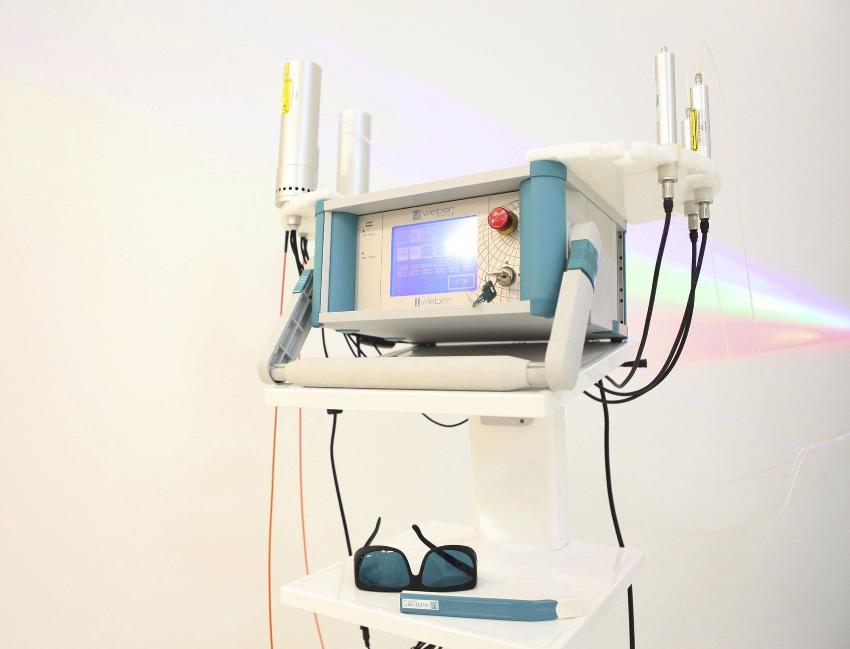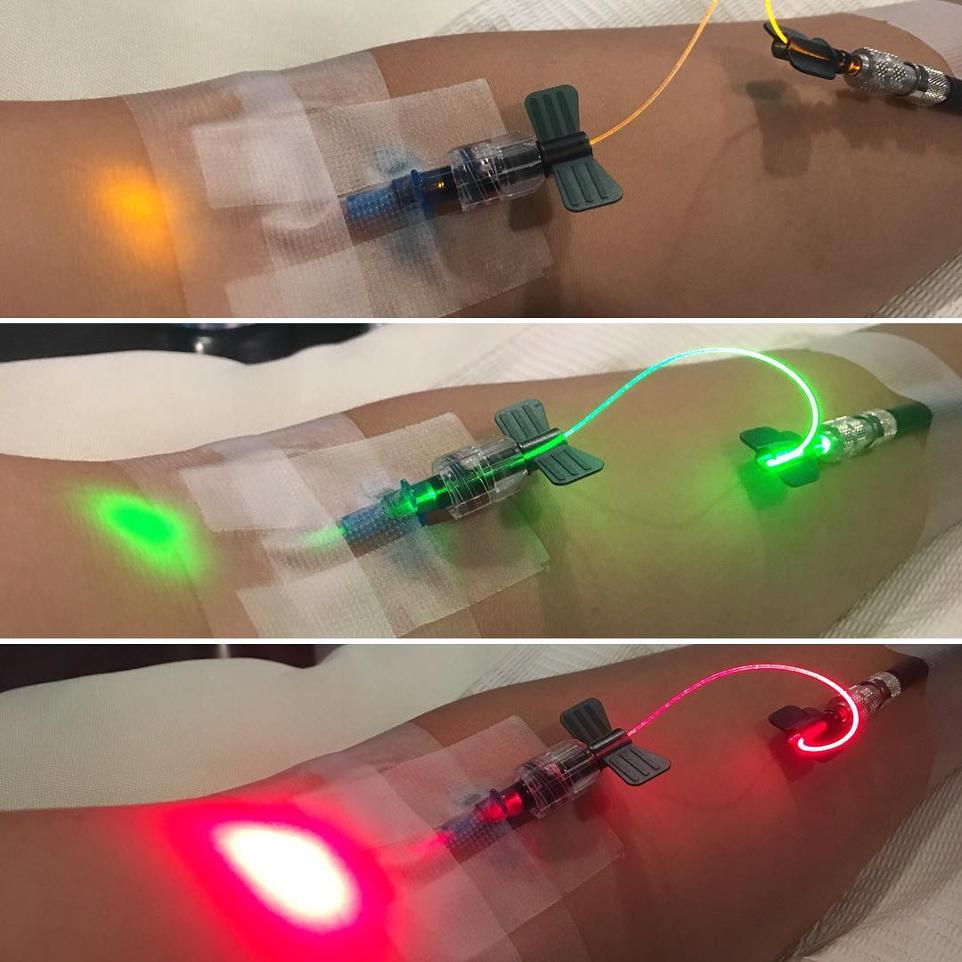Hemolaser: Low-Intensity Endothelial Laser Therapy
Hemolaser: Low-Intensity Endothelial Laser Therapy
Laser therapy, a well-established technology, has evolved spectacularly.
We are therefore delighted to present one of its most promising offshoots: Low-Level Laser Therapy (LLLT), more commonly known as haemolaser therapy.

What is haemolaser?
During a haemolaser session, the practitioner inserts a single-use light conductor (optical fibre) into the patient's vein, which is connected to the laser device. The laser is then activated, irradiating the entire bloodstream without raising the temperature.
Echoing the natural process of photosynthesis, LLLT uses laser light to stimulate and regenerate our cells and tissues, speeding up the healing process. Unlike surgical lasers, LLLT is non-destructive, painless and uses light energy to help our bodies rebalance and regenerate naturally. In the cells, various biochemical processes are activated to combat disease, leading to an improvement in symptoms.
In practice
An intravenous LLLT session is simple and gentle. A needle is inserted into a peripheral vein in the forearm, and an intravenous optical catheter is introduced through the needle. The laser is then delivered directly into the bloodstream. A treatment generally lasts between 30 and 60 minutes. Patients generally feel nothing during the procedure. Haemolaser treatment is a therapy for regulating metabolic functions.
This therapy can be combined with high-dose ozone therapy and our infusions of vitamins and other beneficial substances. Once the catheter is in place, it can be used for several techniques without the need for further injections. These synergistic therapies offer an integrative, holistic approach to optimising your health.
Intravenous laser therapy is a technique that may be necessary, but is rarely carried out alone. It is a protocol to be set up with one of our doctors to ensure maximum effectiveness..
We generally recommend haemolaser for circulatory pathologies, neurological pathologies, inflammatory and rheumatic conditions, intestinal diseases, lipid metabolism disorders, liver disorders, fibromyalgia and chronic fatigue, among others.

Intravenous laser blood irradiation
Haemolaser treatment involves direct laser irradiation of the blood using red, yellow, green, blue and UV lasers. The use of these different laser colours means that the therapeutic indications can be extended, based on your medical history and a personalised protocol set up by the doctor.

